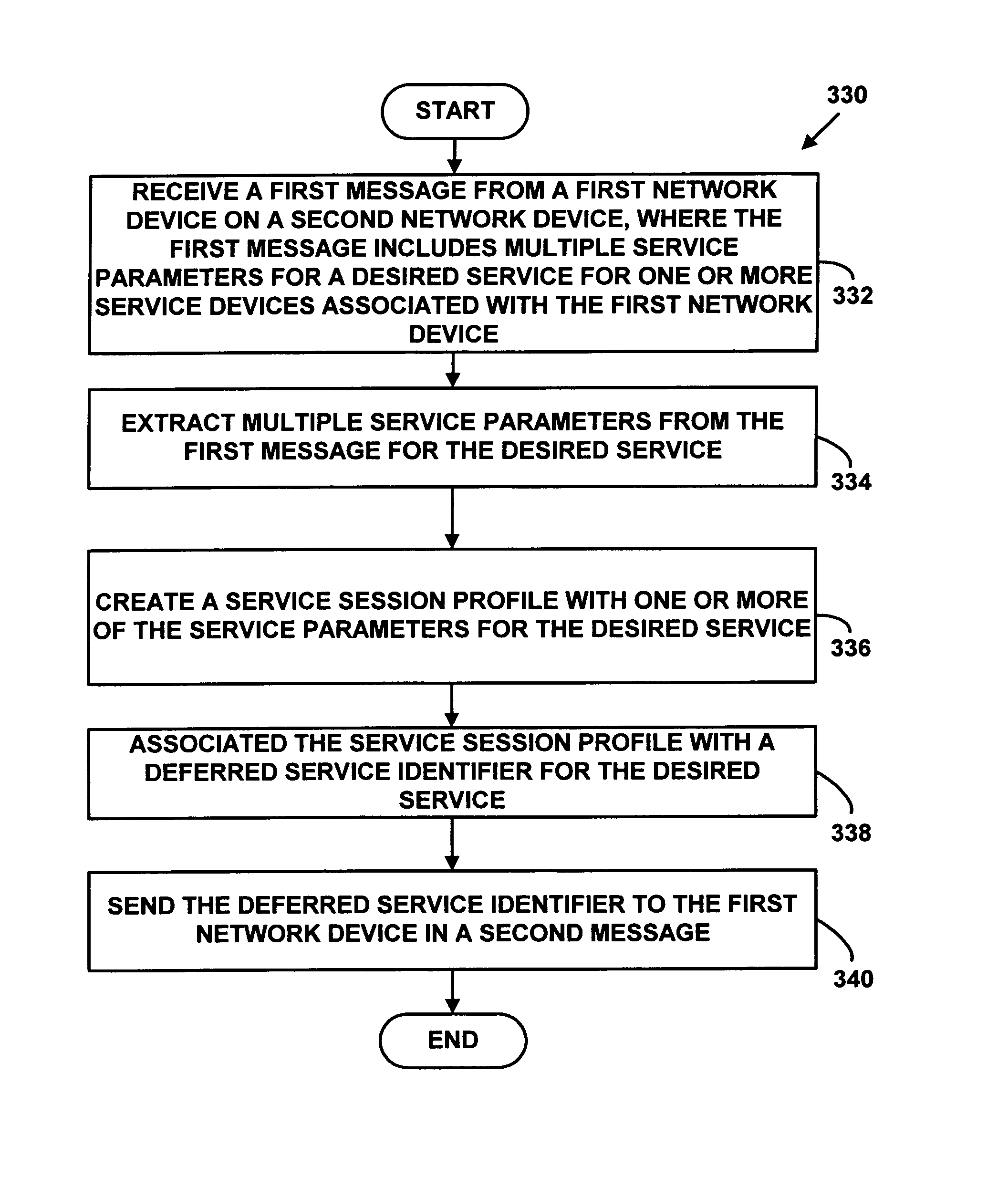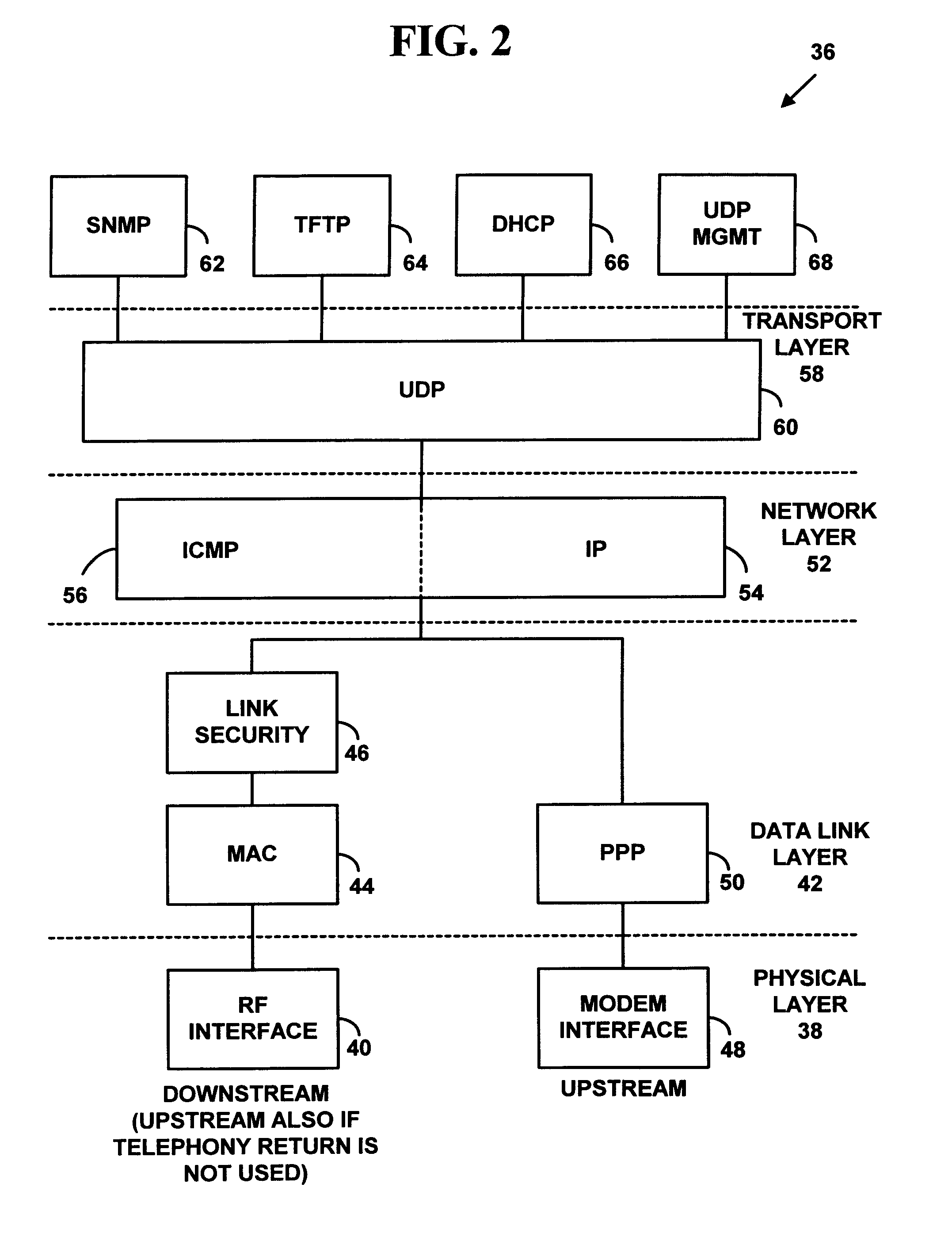Method and system for dynamic service registration in a data-over-cable system
a data-over-cable system and service registration technology, applied in the field of communication in computer networks, can solve the problems of preventing authentication, authorization or accounting from being properly used, and the television network provides only unidirectional cable systems,
- Summary
- Abstract
- Description
- Claims
- Application Information
AI Technical Summary
Benefits of technology
Problems solved by technology
Method used
Image
Examples
Embodiment Construction
Exemplary Data-Over-Cable System
[0048]FIG. 1 is a block diagram illustrating an exemplary data-over-cable system 10. Most cable providers known in the art predominately provide uni-directional cable systems, supporting only a “downstream” data path. A downstream data path is the flow of data from a cable television network “headend” to customer premise equipment (e.g., a customer's personal computer). A cable television network headend is a central location that is responsible for sending cable signals in a downstream direction. A return path via a telephony network (“telephony return”) is typically used for an “upstream” data path in uni-directional cable systems. An upstream data path is the flow of data from customer premise equipment back to the cable television network headend.
[0049]However, data-over-cable system 10 of the present invention may also provide a bi-directional data path (i.e., both downstream and upstream) without telephony return as is also illustrated in FIG. 1...
PUM
 Login to View More
Login to View More Abstract
Description
Claims
Application Information
 Login to View More
Login to View More - R&D
- Intellectual Property
- Life Sciences
- Materials
- Tech Scout
- Unparalleled Data Quality
- Higher Quality Content
- 60% Fewer Hallucinations
Browse by: Latest US Patents, China's latest patents, Technical Efficacy Thesaurus, Application Domain, Technology Topic, Popular Technical Reports.
© 2025 PatSnap. All rights reserved.Legal|Privacy policy|Modern Slavery Act Transparency Statement|Sitemap|About US| Contact US: help@patsnap.com



